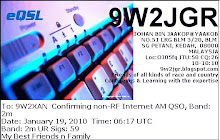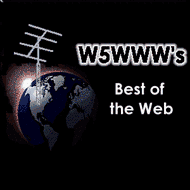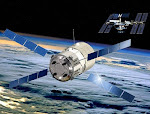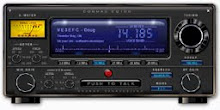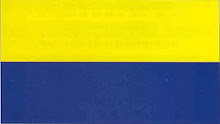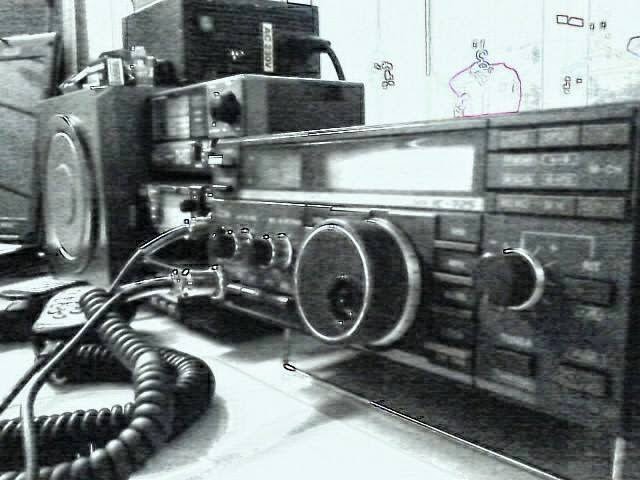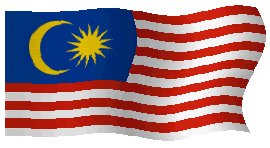
The first artificial satellite was put in the space on October 4, 1957 by the Russians. It was named Sputnik 1, and spent 92 days in Earth orbit. Since then man has launched thousands of rockets, and put thousands of satellites in orbit. There are more than 8000 objects in orbit now, including operational, non-operational, rocket bodies, and debris. They are orbiting at an altitude from 150, up to several thousands kilometers. For more than ten years people have been able to track satellites on a computer using satellite tracking software like Orbitron.
Due to predictable conditions of satellite movement in space (lack of atmosphere) computer software can calculate a satellite's position for given moment. Calculations are done based on known orbit parameters determined at epoch. Known orbital parameters like inclination, eccentricity, argument of perigee, mean motion (revolutions per day), let us track satellite for a reasonable period of time after epoch. Orbital data for each object is grouped, and distributed as a Two Line Element (TLE) file.
To keep tracking software working precisely, one should update elements periodically. For low orbiting objects (altitude less than 500 km) TLE data should be updated every few days. For higher orbits, you can update your TLE every few weeks. Other important things include making your predictions as close to real time as possible by using time synchronization, and the precise coordinates of your location.
You must remember that TLE data for an object that has maneuvered since the last elset is no longer any good. Updating is most important for satellites like Progress, Soyuz, and the Space Shuttle which maneuvers often (docking, deorbit, changing of orbit).
Why do we track satellites? There are several reasons. One might want to observe (even with the naked eye) ISS passing over their home or brilliant Iridium flares. Radio amateurs use satellite tracking software to obtain the best pass for QSO with another radio amateur. Such software can help you with your hobby, and will help you understand more about Astronomy, and Physics. So even if you're a beginner, don't hesitate to download satellite tracking software like Orbitron. Change your home into mission control center!
Remember, satellite tracking is the easiest ever with Orbitron!

Virtual Ionosphere For Amateur Radio;
QsoNet uses the internet to receive audio signals from a ham radio transmitting station, then instantly reflects the audio back to all stations listening on that frequency. There is no RF. Everything is done over the internet. The result is a simulated ionosphere for worldwide amateur radio communication. Stations can use voice, CW (Morse code), PSK and FSK modulation.
ABOUT AMATEUR RADIO
Amateur radio service is defined in the Communication and Multimedia (Spectrum) Regulations 2000 as a radiocommunications service (covering both terrestrial and satellite) in which a station is used for the purpose of self traning, intercommunication and technical investigations carried out by authorized persons who are interested in radio technique solely with a personal aim and without any pecuniary interest.
AMATEUR RADIO OPERATOR'S CERTIFICATE
Regulation 27(1) of the Communications and Multimedia (Technical Standards) Regulations 2000 states that no person shall undertake or conduct any activity in designated skil area unless that person is certified. Amateur radio operator has been gazetted as a designated skill area category under the regulation, hence to operate an amateur radio station a person needs to have an appropriate proficiency and skill i.e. certified in this area.
INTERFERENCE
Please ensure that the radio transmision does not cause interference to any other radio services. Regulation 15(1) of the Communications and Multemedia (Technical Standards) Regulations 2000 states that no person shall intentionally design, install, operate, maintain or modify any communications equipment in a manner is likely to cause interference with, impairment, mulfunction of, or harm to any communications equipment or any other equipment.
Regulation 15(2) of the regulation denotes that a person who contravenes this regulation commits an offence and shall, on conviction, be liable to a fine not exceeding three hundred thousand ringgit (RM 300,000.00) or to imprisonment for a term of not exceeding three years or to both.
To eliminate the potential of interferences, the following procedures must be followed strictly:-
a) Ensure that suffient equipment, tools and test gear is available and can used to monitor and verify that your transmission does not cause any interference to other radio services.
b) You must responsible if your amateur radio is found to be the caused of interference. Immediate remedy action must be taken to rectify the problems in case of interference.
c) Ensure that the transmission do not exceed the level of over deviation.
d) Ensure that the radiated energy is always within the narrowest posible frequency bands for any class of emission in use.
e) The radiation of harmonics and spurious emissions should be suppressed to minimize interference.
Historical Description of Amateur Radio: From the Encyclopedia Britannica:-
Interest in amateur radio arose around the turn of the century, shortly after the Italian inventor Guglielmo Marconi successfully sent the first transatlantic wireless signal in 1901. The interference of amateur broadcasts with commercial and military transmissions led to the institution of government control in 1911. After World War I, amateurs became active in radio experimentation, contributing to developments in long-distance broadcasting and becoming the first radio operators successfully to exploit the upper medium-frequency and lower high-frequency radio bands. Over the years, amateur radio operators have also provided emergency communications during forest fires, floods, hurricanes, and other disasters. They serve as an important link between stricken communities and the outside world until normal communications are reestablished.Amateur radio operators in the United States are subject to international and federal regulations. There are five classes of licenses. Competence in the use of the International Morse Code and a knowledge of radio theory and regulation are required to obtain the advanced-level licenses. Amateur radio is allocated frequencies at the extreme high-frequency end of the medium-wave band, five groups of frequencies in the shortwave band, two groups in the veryhigh-frequency band, three in the ultrahigh-frequency band, and seven in the superhigh-frequency band for telegraphic and telephonic communication using amplitude and frequency modulation. There are restrictions on the power of the transmitters, and certain of the frequencies must be shared with due regard for the needs of other users.
 The first artificial satellite was put in the space on October 4, 1957 by the Russians. It was named Sputnik 1, and spent 92 days in Earth orbit. Since then man has launched thousands of rockets, and put thousands of satellites in orbit. There are more than 8000 objects in orbit now, including operational, non-operational, rocket bodies, and debris. They are orbiting at an altitude from 150, up to several thousands kilometers. For more than ten years people have been able to track satellites on a computer using satellite tracking software like Orbitron.
The first artificial satellite was put in the space on October 4, 1957 by the Russians. It was named Sputnik 1, and spent 92 days in Earth orbit. Since then man has launched thousands of rockets, and put thousands of satellites in orbit. There are more than 8000 objects in orbit now, including operational, non-operational, rocket bodies, and debris. They are orbiting at an altitude from 150, up to several thousands kilometers. For more than ten years people have been able to track satellites on a computer using satellite tracking software like Orbitron. 


